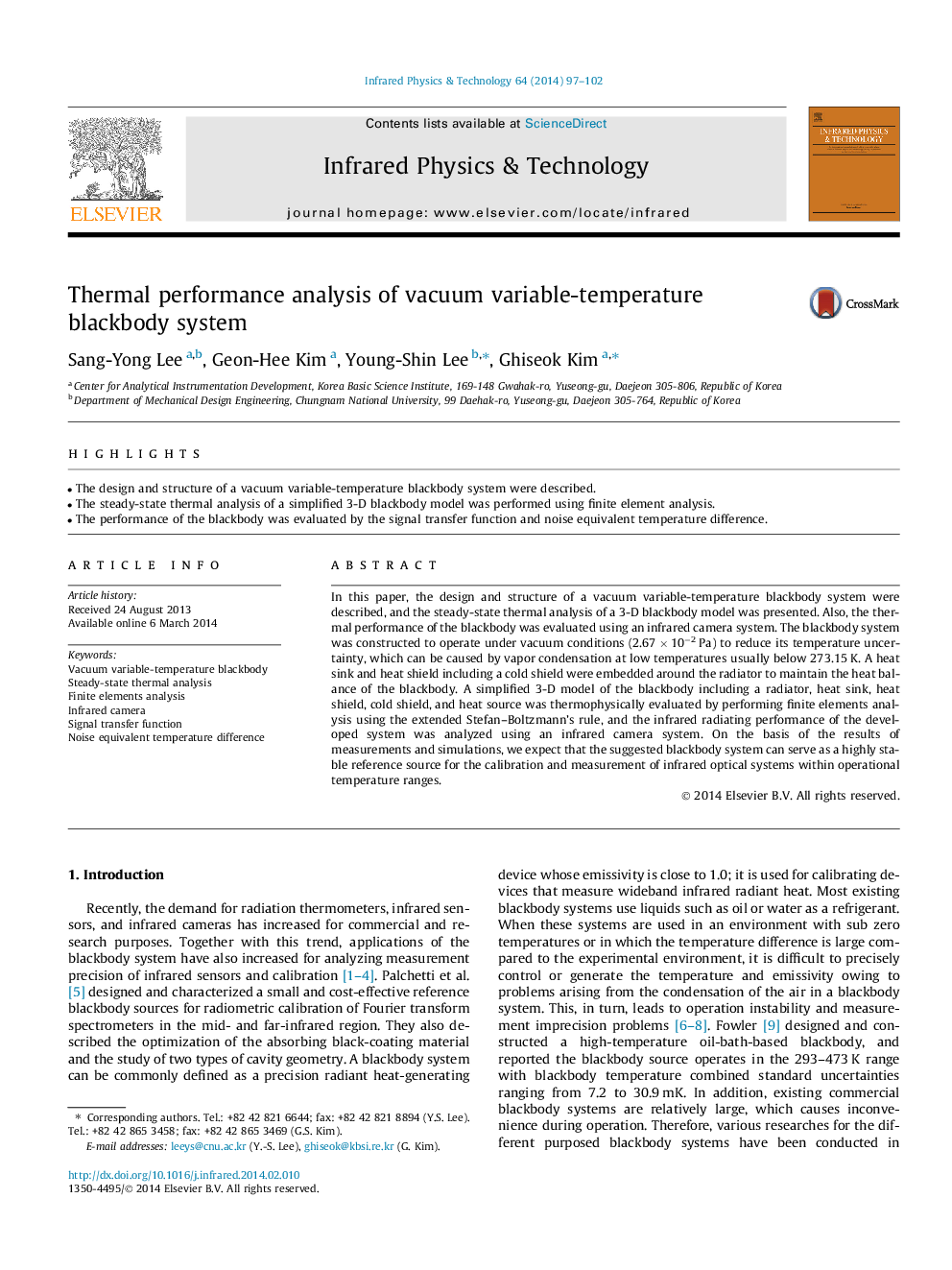| Article ID | Journal | Published Year | Pages | File Type |
|---|---|---|---|---|
| 1784458 | Infrared Physics & Technology | 2014 | 6 Pages |
•The design and structure of a vacuum variable-temperature blackbody system were described.•The steady-state thermal analysis of a simplified 3-D blackbody model was performed using finite element analysis.•The performance of the blackbody was evaluated by the signal transfer function and noise equivalent temperature difference.
In this paper, the design and structure of a vacuum variable-temperature blackbody system were described, and the steady-state thermal analysis of a 3-D blackbody model was presented. Also, the thermal performance of the blackbody was evaluated using an infrared camera system. The blackbody system was constructed to operate under vacuum conditions (2.67 × 10−2 Pa) to reduce its temperature uncertainty, which can be caused by vapor condensation at low temperatures usually below 273.15 K. A heat sink and heat shield including a cold shield were embedded around the radiator to maintain the heat balance of the blackbody. A simplified 3-D model of the blackbody including a radiator, heat sink, heat shield, cold shield, and heat source was thermophysically evaluated by performing finite elements analysis using the extended Stefan–Boltzmann’s rule, and the infrared radiating performance of the developed system was analyzed using an infrared camera system. On the basis of the results of measurements and simulations, we expect that the suggested blackbody system can serve as a highly stable reference source for the calibration and measurement of infrared optical systems within operational temperature ranges.
